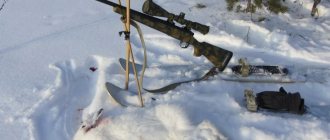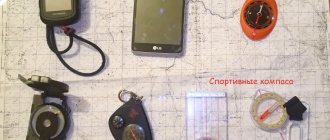When there is a building collapse, avalanche, shipwreck, hurricane or other emergency, much depends on the behavior of the victims. The basic rule is: a person who finds himself in extreme conditions should not leave the area of the incident. To increase the chances of rescue, you need to stay in place and send a distress signal using special technical or improvised means.
It doesn’t matter exactly how to ask for help, the main thing is that the signal is visible from air, water and land. This is not difficult if you familiarize yourself with the variety of SOS signals in advance and, if necessary, simply refresh your memory.
Types of signals
In life safety lessons in 6th grade, children learn basic distress signals. Some are served with the help of special devices, others without them. At the same time, all known methods of sending signals are divided into several groups:
- light (a light source or a reflective object is required for supply: mirror, foil, etc.);
- smoke signals (an emergency situation is indicated by columns of smoke from lit fires);
- gestures (will help attract the pilot’s attention when the helicopter approaches the ground);
- informational (signs will tell rescuers where to look for victims if they had to leave the scene);
- aqueous (brightly glowing colors are diluted in water);
- sound (whistle, scream, firecrackers, shots);
- radio signals (sent using a walkie-talkie, mobile phone, direction finder or other technical “toy”).
| Hand distress signals (gestures) | What does it mean |
| Our radio is working | |
| Affirmative answer (Yes) | |
| We'll be able to continue on our way soon, please wait if possible. | |
| Need technical assistance or spare parts, long delay | |
| Landing impossible | |
| Take us away, the plane will be abandoned | |
| Use a pennant | |
| It's okay, don't wait up | |
| Negative answer (No) | |
| Landing here (point in direction of boarding location) | |
| Medical help needed! URGENTLY! |
Where can an ultrasonic whistle come in handy?
To train a dog, it is recommended to use an ultrasonic whistle from puppyhood. The dog develops reflexes faster, gets used to such commands and quickly finds contact with the owner.
The device will be useful:
- for dog training;
- from teaching from barking;
- scaring away aggressive or stray animals.
In order to tell the animal a command, the owner only needs to blow the whistle (or press a button if the whistle is electronic) maintaining the duration and equal intervals of time. Each command has its own signal, like in Morse code. Several courses and the animal begins to show results.
Gradually, the dog subconsciously begins to perceive the synchronicity of the whistle signal, hand gestures and voice as a command. After it has been worked out, only exposure to ultrasound is enough to fulfill the owner’s requirements. You can develop several options for conventional signs; of course, you should not overuse them.
What we call ultrasound is just sound for an animal. For humans, a silent dog whistle only works when the result is visible. In other cases, one can only guess about its action. It is important to monitor the condition of the nutrient element installed in the device; some manufacturers equip the whistle with an indicator.
Using a whistle makes it easier for the owner of the animal to control it; when issuing a voice command over a long distance, it is difficult for both the pet and the person himself. The wind and noise drown out the voice. But ultrasound can reach an animal's ears up to 450 meters, depending on the design of the whistle and the area where the person and dog are located.
Special means for sending distress signals
Even a trip to the bakery can turn into a disaster: a building collapses, or you fall into a half-open hatch. So then talk about the dangers that await a person far from civilization. And if within the city limits they will rush to help the victim from all sides, then in autonomous conditions they will have to fight for survival.
The first thing to do is to attract the attention of rescuers, volunteers or other people nearby. For this you will need:
- A loud whistle that can be heard over a long distance. It is useful in conditions of strong sound dispersion, when the victim’s voice is heard no further than 100 m: high mountains, buildings, the opposite direction of the wind, dense forest, etc. The sound of the whistle is amplified in a confined space.
- A radio station that works best on flat land and over water. In the mountains the device is of little use.
- A transceiver that allows you to send and receive response signals.
- A radio beacon sending signals to an emergency frequency.
- A flashlight-stick, lighter or other self-contained light source that works up to 10 hours and is invisible from a long distance. You can send a distress signal in Morse code.
- A signal buoy if the crash happened on the water.
- A water marker that colors water deep orange or bright green.
- Heliograph mirror, produces powerful glare (sunbeams). From the air, such a signal is visible from a distance of 20 thousand meters.
- The signal flare explodes at a height, which means it is visible at a great distance. This is especially important if you get lost in the mountains.
- A signal torch, burning brightly and visible from afar.
Note! To prevent an extreme situation from becoming hopeless, when going on an expedition, collect the listed items in your backpack. This will be the key to your quick salvation.
How to choose the right whistle?
Finding an emergency whistle can be a little daunting considering there are many options on the market. Manufacturers love to praise their products and try to convince you that their products are the best. If you don't have basic information, you may choose the wrong one.
Here are some things you should know when choosing an emergency whistle:
- It should be noisy
and you don't have to work hard when you destroy it. You never know when he'll end up getting hurt and won't be able to lift his whistle to maximum lung capacity. The whistle must be capable of producing a sharp and penetrating sound that can be heard over long distances and in other noise environments. - It must be difficult.
You never know what situation you might encounter, so you need a whistle that will resist freezing and deterioration. Regular whistles require certain conditions to function properly, but when it comes to emergency situations, you cannot be picky about the conditions. You need a whistle that works just as well in Antarctica as it does in the depths of the abyss. Also make sure the material is impact resistant. If you fall and break, you won't be able to use it. Don't buy metal whistles if you are in a cold environment, they will stick to your lips. - It can't get stuck or exaggerated.
We recommend choosing a whistle without a blast. Because they have no moving parts, this type of emergency whistle will not get stuck and cannot be inflated. The harder you blow, the louder the sound will be. The pea whistle loses its effectiveness when exposed to dirt and moisture. If the peas get stuck, the sound will no longer come out. With the No Bell Whistle, you won't have to worry about that anymore. - It's easy to find.
A whistle is a small thing that can be easily lost. That's why you need a whistle that you can attach to something or just wear around your neck. There are many variations of the whistle that allow you to use it as a bracelet or even as a ring to keep it close to you at all times. Make sure that if you use it around your neck, use a cord that breaks under pressure. You can also learn how to make paracord cord if you want something more special. You don't want a bully to use this against you and end up strangling you with your own safety rope. A brightly colored whistle will also be easier to find when browsing through a lot of small items. Try bright orange or phosphorescent green, these are the easiest colors to spot.
These are the main characteristics you should look for in a safety whistle. Now let's talk about some emergency whistles that we trust and find effective enough to recommend to our readers.
International codes
To help victims of emergency situations, international distress signals have been developed that are understandable to rescuers in all countries. These are the symbols of the code table that need to be positioned correctly:
- symbol width from 3 m;
- width – 10 m;
- white space between signs from 3 m.
Ground code signals are posted on hills, unforested slopes and clearings (so that they can be seen both from the ground and from the air). A visual “cry for help” is made out of everything that is at hand: tents, life jackets, sleeping bags, brightly colored clothing, etc.
International code symbols lay out layers of turf cut with a knife. To increase the width of the symbols, the turf is turned over with the soil up and laid out near the trench (close to each other).
| Signal | What means |
| Need a doctor | |
| Medicines needed | |
| We can't move on | |
| Water and food needed | |
| Need weapons and ammunition | |
| Map and compass required | |
| Need a warning light and batteries | |
| Point the direction to salvation | |
| We are moving in this direction | |
| We're trying to take off | |
| The plane is damaged | |
| It's a safe landing here | |
| Oil and food needed | |
| Everything is okay | |
| No | |
| Yes | |
| Didn't understand | |
| Engineer required | |
| We found all the people | |
| The ship is damaged |
In snowy areas, signs are made of spruce branches, trampled or painted with ash from a fire.
In the desert, sand is used, collected in small shafts. Such signs are visible from morning to evening, and the shadows cast by the sand shafts are clearly visible from the air.
In order for visual signaling devices to be visible from a distance, they must stand out against the main background of the area.
Note! Using special or improvised means, the SOS distress signal is transmitted from Morse code. But few people know that there is another emergency signal of international significance - “Mayday,” meaning “Help!” To signal a disaster, orange smoke, a sound signal, and an inverted national flag are used.
International radio distress signals
The distress signal is sent via radio by repeating the code word three times:
- Mayday is a contraction of the French phrase "come to my aid" to "help." Used when there is very great danger.
- SOS (SOS) is a distress signal, with the meaning - save our souls.
- Pan-Pan (Pen-Pan) - translated as “breakdown” and is used for medium danger.
Regardless of the degree of extremeness of the conditions, it is important to use your wits and remember that methods of sending a distress signal should not be costly, but noticeable to rescuers.
Sound signals of locomotives
1.
Sound signals when trains are moving are given by whistles on locomotives, multiple unit trains and railcars, blowers, and hand whistles.
| Signal | Signal value | Who serves |
| Three short | "Stop" | Locomotive crew, chief conductor, station and other workers |
| One long | "Go to the Train" | Station duty officer or, on his instructions, park duty officer, signalman, switch post duty officer or chief conductor; the driver of the leading locomotive answers; The driver of the second locomotive repeats the signal during double traction. If a train departs from a track that has an exit traffic light, this signal is given by the driver of the leading locomotive after the opening of the exit traffic light; the driver of the second locomotive repeats the signal during double traction |
| Three long | Requirement for employees servicing the train to “Slow down” | Lead locomotive driver; the driver of the second locomotive repeats the signal during double traction |
| Two long | Requirement for employees servicing the train to “Release the brakes” | Lead locomotive driver; the driver of the second locomotive repeats the signal during double traction |
| Three long and one short | About the arrival of the train at the station not in full force | Lead locomotive driver |
| Three long and two short | Summoning an assistant driver, chief conductor, mechanic-foreman, and utility train supervisor to the locomotive | The driver of the leading locomotive of a train stopped on the stretch |
| FOLLOWING DOUBLE PULL | ||
| One short | Request for the driver of the second locomotive to reduce traction | Lead locomotive driver; the driver of the second locomotive repeats the signal |
| Two short | Requirement for the driver of the second locomotive to increase traction | Lead locomotive driver; the driver of the second locomotive repeats the signal |
| Two long and two short | Requirement for the driver of the second locomotive to “Lower the pantograph” | Lead locomotive driver; the driver of the second locomotive repeats the signal |
| FOLLOWING WITH A PUSH LOCOMOTIVE | ||
| Two short | Requirement to start nudging | Lead locomotive driver; the driver of the pushing locomotive repeats the signal |
| One short, one long and one short | The demand to stop pushing, but not to lag behind the train | Lead locomotive driver; the driver of the second locomotive repeats the signal |
| Four long | The demand to stop pushing and go back | Lead locomotive driver; the driver of the second locomotive repeats the signal |
| Note. When a train is traveling with double traction with a pushing locomotive, the driver of the second locomotive repeats all the forces after they are supplied from the pushing locomotive. The procedure for giving the signal “Lower the pantograph” by the driver of the pushing locomotive in this case is established by the head of the railway. | ||
If there is radio communication, sound signals when trains are traveling with double traction or with a pushing locomotive can be replaced by negotiations between drivers.
2. Alert signal - one long whistle of the locomotive (multi-unit train) and trolley is given:
- when the train approaches stations, waypoints, passenger stopping points, portable and manual signals requiring a reduction in speed, signal sign “C”, excavations, curved sections of track, tunnels, crossings, removable railcars, removable repair towers, track trailers and other removable mobile units;
- when the train approaches the work site starting from the kilometer preceding the one indicated in the warning, regardless of the presence of portable signals;
- upon perception of the manual signal “Lower the pantograph” given by the signalman;
- when approaching people on the track and in other cases specified in the orders of the head of the railway.
When traveling during fog, snowstorms and other unfavorable conditions that reduce visibility, the warning signal is repeated several times, and along the wrong path it is given with one long, short and long whistle of the locomotive.
Train compilers who have stopped maneuvers due to the reception of a train, signalmen and those on duty at the switch post at the warning signal are each obliged to check and make sure in their own area that the safety of the movement of the received train is ensured.
3. The alert signal is given by one short and one long whistle of the locomotive (multi-unit train) and is repeated periodically:
- when approaching a traffic light with a red light, which has a conditionally permissive signal, and further following the block section;
- when following a traffic light with a red light, as well as with an unclear indication or one that went out after parking in front of it and further following the block section;
- when approaching the entrance traffic light with a moon-white light of the invitation signal and in all other cases of receiving a train at the station with a prohibitory indication or the main lights of the entrance signal have gone out;
- when a train is received on the wrong track (in the absence of an input signal along this track) This signal must also be given when further traveling along the neck of the station.
4. When trains meet on double-track sections, warning signals are given with one long whistle:
- the first signal is when approaching an oncoming train,
- the second - when approaching the tail of an oncoming train.
5. Sound signals about the approach of a train are given:
- on the stretch - as linemen of railway tracks and artificial structures, crossing guards, managers of track work and work on the contact network, or workers accompanying removable repair towers and track trailers;
- at stations - signalmen and attendants of entrance switch posts.
The approach of an odd-numbered train is notified by one long sound signal, and that of an even-numbered train by two long beeps.
Signalmen and attendants at the entrance switch posts, upon hearing the train departure signal, give one long beep.
6. At stations and stages located within large cities and uninhabited areas, resort areas, according to the list established by the head of the railway, sound signals by locomotives (multi-unit trains) should be made with a low-volume whistle, with the exception of cases of locomotives traveling in push trains , the risk of collision with people or obstacles, as well as the need to provide alert and alarm signals.
At these same stations, locomotive (multi-unit train) whistle signals are not given when trains are departing, testing auto brakes, or when moving along depot tracks. The procedure for notifying passengers about the departure of trains at such stations is established by the head of the railway.
| < Previous | Next > |










